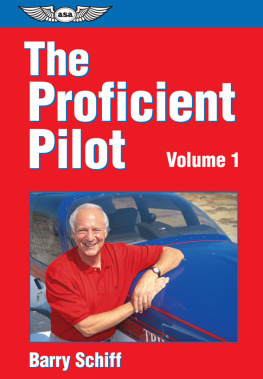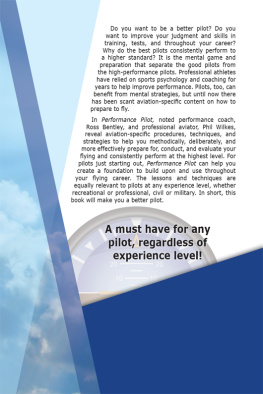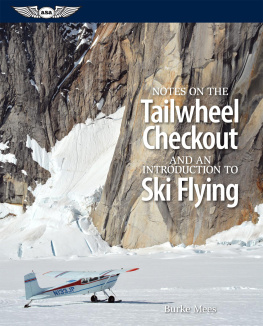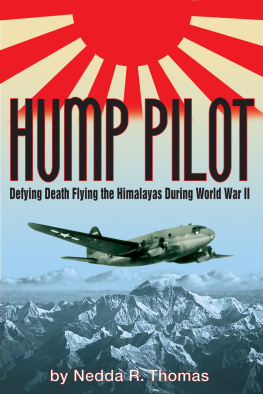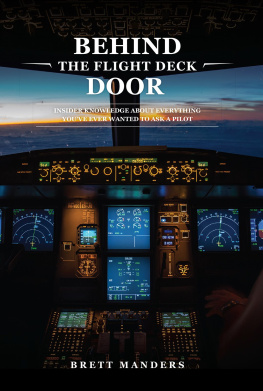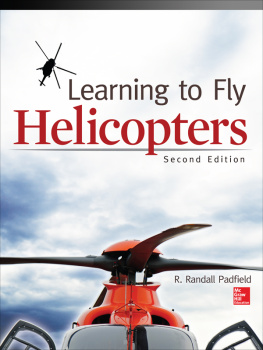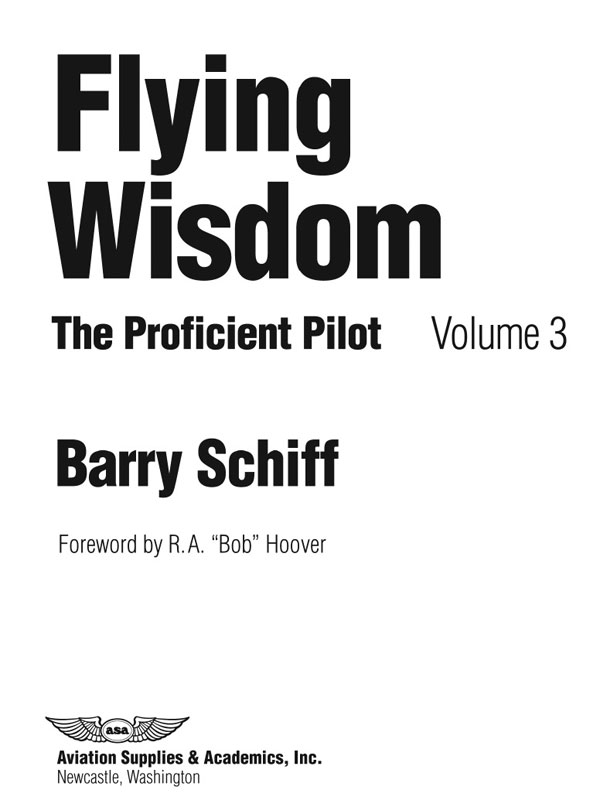Flying Wisdom: The Proficient Pilot, Volume 3
by Barry Schiff
Aviation Supplies & Academics, Inc.
7005 132nd Place SE
Newcastle, Washington 98059-3153
Email: asa@asa2fly.com
Website: www.asa2fly.com
1997 by Barry Schiff
All rights reserved. This book, or any portions thereof, may not be reproduced in any form without written permission of the publisher.
Many of the tables and illustrations in this book appear courtesy of AOPA Pilot.
Published 1997 by Aviation Supplies & Academics, Inc. Ebook edition published 2012.
ASA-PP-3-EB
ePub ISBN 978-1-61954-004-0
Kindle ISBN 978-1-61954-005-7
LC# 94-14249
Also by Barry Schiff
Flight 902 is Down!*
The Vatican Target*
Golden Science Guide to Flying
The Boeing 707
All About Flying
Basic Meteorology
The Pilots Digest
The Proficient Pilot, Volume 1
The Proficient Pilot, Volume 2
Test Pilot: 1,001 Things You Thought You Knew About Aviation
Dream Aircraft: The Most Fascinating Airplanes Ive Ever Flown
*in collaboration
Dedication
For Dorie
Contents
Acknowledgements
People acquire most of their knowledge from others. In this respect, no man is an island. Similarly, what has been written on these pages consists primarily of a distillation of f lying wisdom gleaned from others during my aviation career. Crediting each of these individuals is not possible because I would need to include everyone with whom I have shared a cockpit. In one way or another, each has contributed to my aeronautical education. And for this I am genuinely grateful.
My deepest appreciation is extended to those directly involved with the creation of this book: Paul Blackman, Art Davis, Bart Everett, Hal Fishman, Eleanor Friede, Jack Norris, Wally Roberts, Rob Sacks, Perry Schreffler, Stephen Singleton, and Norman Schuyler. Their efforts on my behalf have been invaluable.
Barry Schiff
Los Angeles, California
Foreword
Captain Barry Schiff has some invaluable experience that hed like to share with you.
This third volume in his Proficient Pilot series goes beyond the captivating and outpouring of f lying knowledge and expert tips packed into Barrys first two volumes. This time around, he gets personal; youll learn about a veteran fliers thought processes as well as his gut reactions.
And the combination can do you a world of good.
Barrys Flying Wisdom is a combination of straightforward, no-nonsense advice about how to fly the airplane proficiently. He employs such simple logic that youll easily absorb each lesson and retain it for future use.
Its a deep contemplation of both the conscious and subconscious decisions made during flight.
Some of the wisdom contained in these pages has evolved from a lifetime habit of considering principles, mechanics, andmost significantlyhuman factors. Barry is an extraordinary teacher, because he plants himself squarely in your place as he writes about what he knows so well. He combines his experience as a veteran airline captain with his equally vast experience as a general aviation pilot and f light instructor to share the trade secrets he has learned along the way. Great communicators know how to get under your skin, how to get the facts to stick to your ribs. This is some of the most effective pilot-to-pilot talk youll find in a book. It ought to be required reading for all pilots.
Barrys insights bring life to the subjects we studied in ground school by teaching how to take advantage of these lessons during our everyday flights.
Imagine what it would be like if Ben Franklinwho was a great teachercould talk about electricity to electricians. Barry is also one of those who possess a deep understanding of his subject and knows how to get it across to others.
I cant wait for you to begin reading, so take a look at some of whats covered: Those interested in advanced material will find Barrys section on flying jet airplanes so comprehensive that it is virtually an independent course of study, which includes enlightening discussions about Mach airspeed, high-altitude meteorology and operational considerations, all in his inimitable and entertaining style.
Learn the anatomy and hazards of a skidding turn, the myth of the downwind turn, and how (and how not) to cope with an open door in flight. Black-hole approaches at night is a misunderstood subject that is illuminated under Barrys advice, and to gain invaluable lessons about pilot error (and our susceptibility to it), read Chapter 9 very carefully. Learn about what causes deep stalls and how to avoid getting that far into trouble.
So much of this book is just plain common sense, especially Barrys section dealing with his personal observations. In this section youre really in there, flying with him, thinking about issues, questioning what youre doing, weighing every experience. The challenge offered here is this: to use every bit of your own personal resources, through reading the wisdom of Barrys experience, to deal with destinationitis, complacency, poor judgment, expectations vs. reality, fatigue, pilot errors, survival, and how to escape the grip of a killer downdraft.
And these are a few of the highlights. Just take a look at the table of contents to see what a wide spectrum is covered in this book.
Barry saves some of my favorite subjects for last, interesting chapters that discuss how to build flying time by towing gliders, towing banners, and flying on skis. And then, as a special bonus, he describes some of his most memorable and heartwarming flights.
Read on and benefit from the wisdom of a veteran aviator who wants to share his thoughts, his feelings, and even his cockpit. Youll be thankful for the opportunity.
R.A. Bob Hoover
Section 1: Pilot Proficiency
A proficient pilot earns an advanced degree of competence mainly through practice and experience. But a depth of knowledge and an understanding of how to operate an aircraft can originate from a variety of sources. This book is one such source, a distillation of much of what I have learned during a lifetime of diligent study and more than 25,000 hours in the air.
Chapter 1 The Danger of Skidding Turns
My first instructor was somewhat of a sadist. Sitting in the back seat of the Aeronca Champ, he would take great delight in swatting me on the back of the head with a rolled-up sectional. I could expect to get clobbered whenever
I failed to maintain glide speed during a landing approach and whenever I allowed the slip-skid ball to wander off-center, which seemingly was every time I entered or recovered from a turn. Mike taught me how to make coordinated turns all right, but he never did teach me why it was so important.
Most slips and skids are unnoticeable indiscretions. At other times, they are minor annoyances. But every once in a while, they kill people.
One of the most dangerous and insidious forms of uncoordinated flight is the inadvertent low-altitude skidding turn. It occurs most often in the traffic pattern, when turning from a close-in base leg to a relatively short final approach.
The scenario typically begins when a pilot incorrectly perceives an excess of airspeed while on base leg, a sensation most often caused by a tailwind that increases groundspeed while on base. A similar groundspeed increase also occurs while in the traffic pattern at high density altitudes and is the result of true airspeed being significantly greater than indicated airspeed.


